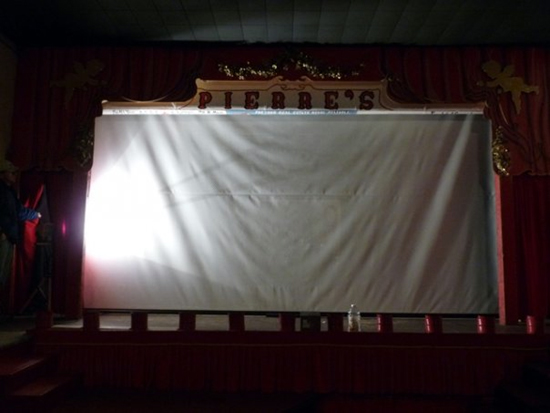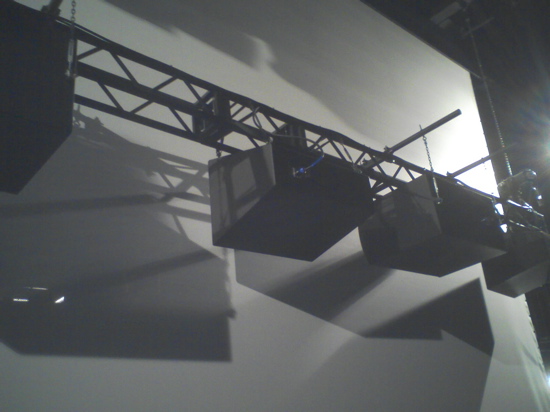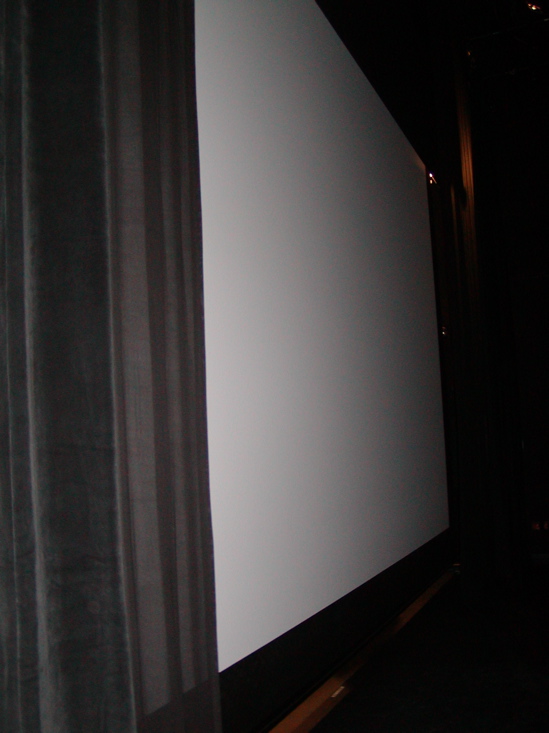|
|
This topic comprises 2 pages: 1 2
|
|
Author
|
Topic: Whats Happened To Hurley Screen?
|
|
|
|
|
|
|
|
|
|
|
|
|
|
|
|
|
|
|
Tom Egbert
Film Handler
Posts: 13
From: Victor, Idaho, USA
Registered: Oct 2009
|
 posted 01-08-2010 12:09 AM
posted 01-08-2010 12:09 AM





Prior to shipping, Hurley inspects their screens with an image using a DLP projector. To accurately judge the screen, Hurley requires that we send them a picture of the screen with no ambient light and an image on the it. They say that the ripples should not be visible when a movie is being shown on it. I cannot comment if this is true or not, since we have not used it yet. My concern is that from the auditorium seats, while the house lights are up and the screen is blank, the ripples are visible. We don't want to it to appear as though we hung bed sheets up for a screen. We have a very old theater, and not very much is new...except the screen, and we were hoping that it would look nice and flat...first class.
We did some experimenting today. We put the light to the side again so we could see best what was happening. We climbed a ladder and put slight upward pressure on the carrier pipe. Instantly, the v-waves disappeared and a few droopy areas remained, but it looked much better. With a little engineering ingenuity, we might be able to devise a small horizontal roller on a pressure spring to apply upward pressure on the carrier pipe to mitigate much of the drapery issues.
I am concerned that we give Hurley a fair shake on this first before we make too big of an issue out of it. They have not shut the door on us yet. We will have to see how it all pans out.
| IP: Logged
|
|
Stephen Furley
Film God

Posts: 3059
From: Coulsdon, Croydon, England
Registered: May 2002
|
 posted 01-08-2010 02:48 AM
posted 01-08-2010 02:48 AM




quote: Mark Gulbrandsen
Everything I've seen and worked with are top roller systems. Including Harkness...
That's interesting, I don't think I've sen any cinema type screen that's top roller, though Harkness' website lists both types.
Pictureville Bradford, Sheffield Library Theatre, Concert Hall and I think Ashcroft Theatre at the Fairfield Halls Croydon and the arts centre in Potters Bar are all bottom roller for example.
Top rollers are mainly seen here for small screens in places like lecture theatres and sports bars, usually about 2-4 metres in width. In the past small screens were also often bottom-roller, with manually-operated cords just tied off on a cleat, but motorised top-roller is normal for modern ones.
I think bottom-rollers hang better; the top of the sheet can be more rigidly supported, and when in use part of the weight of the roller is carried by the sheet, providing vertical tension. The top and bottom edges are slightly tensioned before being attached, an no other horizontal tensioning is generally required. There may be a slight curl at the very edge of the sides of the sheet, a couple of inches or so, but this is covered by the masking.
Unless the sheet is stretched or damaged in some way they look fine. Obviously, they cannot be curved like a normal frame screen can be.
| IP: Logged
|
|
|
|
Frank Angel
Film God

Posts: 5305
From: Brooklyn NY USA
Registered: Dec 1999
|
 posted 01-08-2010 09:28 AM
posted 01-08-2010 09:28 AM





Richard, you are BAD... ![[Big Grin]](biggrin.gif)
Hurley is right -- a projected image will cover a lot of faults because it hits the screen at zero angle, thus it doesn't produce shadows around the screen imprefections -- hence DIs can use corrigated metal for their screens and the ridges simply disappear.
That said, it is also monumentally absurd for a screen company to say that it's acceptable for their screen to hang with ripples and sags like an old whore's tits simply because you can't them when the picture is projected. That's like the madam telling you, "Sure she's old, but don't worry, just turn off the light and you won't see the wrinkles." I've heard some pretty far-fetched cop-outs, but that one is totally bogus. Hurley should be ashamed.
I know there are a lot of bad things said about Technikote out there, but we've hung four of their "pearlescant" screens over time in three spaces, one less than two years ago and have never had any issues with them, especially with seams, which seems to be what the complaints are usually about. No seams visible on any of them, INCLUDING room light as well as projected light. Maybe we got lucky, but they have stayed white over a 15yr period -- no yellowing. I am very happy with them, and given that their price is considerably lower than Hurley or MDI, they are a worthy alternative for us independent/smaller (read poorer) operations.
| IP: Logged
|
|
|
|
|
|
|
|
All times are Central (GMT -6:00)
|
This topic comprises 2 pages: 1 2
|
Powered by Infopop Corporation
UBB.classicTM
6.3.1.2
The Film-Tech Forums are designed for various members related to the cinema industry to express their opinions, viewpoints and testimonials on various products, services and events based upon speculation, personal knowledge and factual information through use, therefore all views represented here allow no liability upon the publishers of this web site and the owners of said views assume no liability for any ill will resulting from these postings. The posts made here are for educational as well as entertainment purposes and as such anyone viewing this portion of the website must accept these views as statements of the author of that opinion
and agrees to release the authors from any and all liability.
|

 Home
Home
 Products
Products
 Store
Store
 Forum
Forum
 Warehouse
Warehouse
 Contact Us
Contact Us




 Printer-friendly view of this topic
Printer-friendly view of this topic








![[thumbsup]](graemlins/thumbsup.gif)


![[Razz]](tongue.gif)

![[Big Grin]](biggrin.gif)






